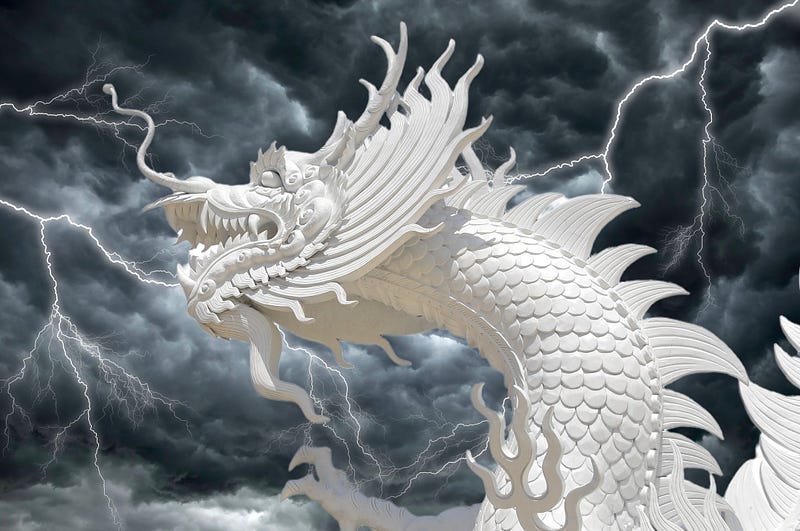The ancient story behind an everyday expression

According to the 9th-century Chinese history, Rekidaimeigaki, 歴代名画記, there is an interesting story behind the four character expression used in both China and Japan, 画竜点睛. In Japanese, this is read garyōtensei, and means to put the finishing touch on something.
The characters by themselves mean:
画 picture, brush stroke
竜 dragon
点 spot
睛 pupil
Before I share the story with you, it’s helpful to understand a certain Buddhist tradition. When a new statue of the Buddha is consecrated, an “eye-opening ceremony” is held. The officiating priest carefully paints the pupils on it, and the spirit of the Buddha enters the statue.
So now, on to the story.
Dragons on temple walls
In 5th century China lived an artist of exceptional skill. His name was Zhang Sengyou, and he was commissioned to paint a mural of four white dragons on the wall of Anrakuji Temple.
As the lifelike dragons appeared one by one upon the wall, onlookers marveled at their realism.
Then Zhang stopped painting.
“But what of the eyes? They have no pupils! You’re not finished.” The people urged him to paint pupils to complete the dragons.
Zhang replied, “If I add the pupils, the dragons will fly off into the sky.”
“That’s impossible!” They laughed in disbelief, insisting he finish the dragons.
The artist sighed and gave in. He painted pupils on one, and then two of the dragons. As he painted, dark clouds gathered. Thunder clapped. Lightning struck. True to the artist’s word, the mighty beasts came to life and flew to the heavens, leaving the two unfinished dragons quiet upon the wall.
Once the dragons were out of sight, calm returned.
The crowd was struck dumb, staring in silence at the sky. The two sightless dragons remain to this day on the walls of Anrakuji Temple.
画竜点睛, garyōtensei, literally means adding the dot of the pupil to the dragon painting — or as my dictionary defines it, “completing something by executing the final, critical step.”
If you are interested in the history of Japanese, and how Chinese characters became part of the language, you might like Why is Learning Japanese So Hard?
References:
Kotobank 画竜点睛, Kotobank 歴代名画記, Japanese dictionary.
If you have questions about Japan or suggestions for articles, please add them in the comments. For more photos and information on Japan, follow me on instagram at: https://www.instagram.com/more_than_tokyo/




